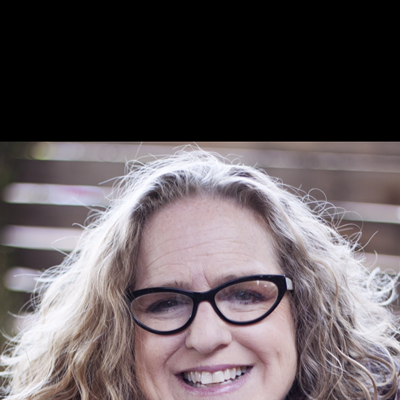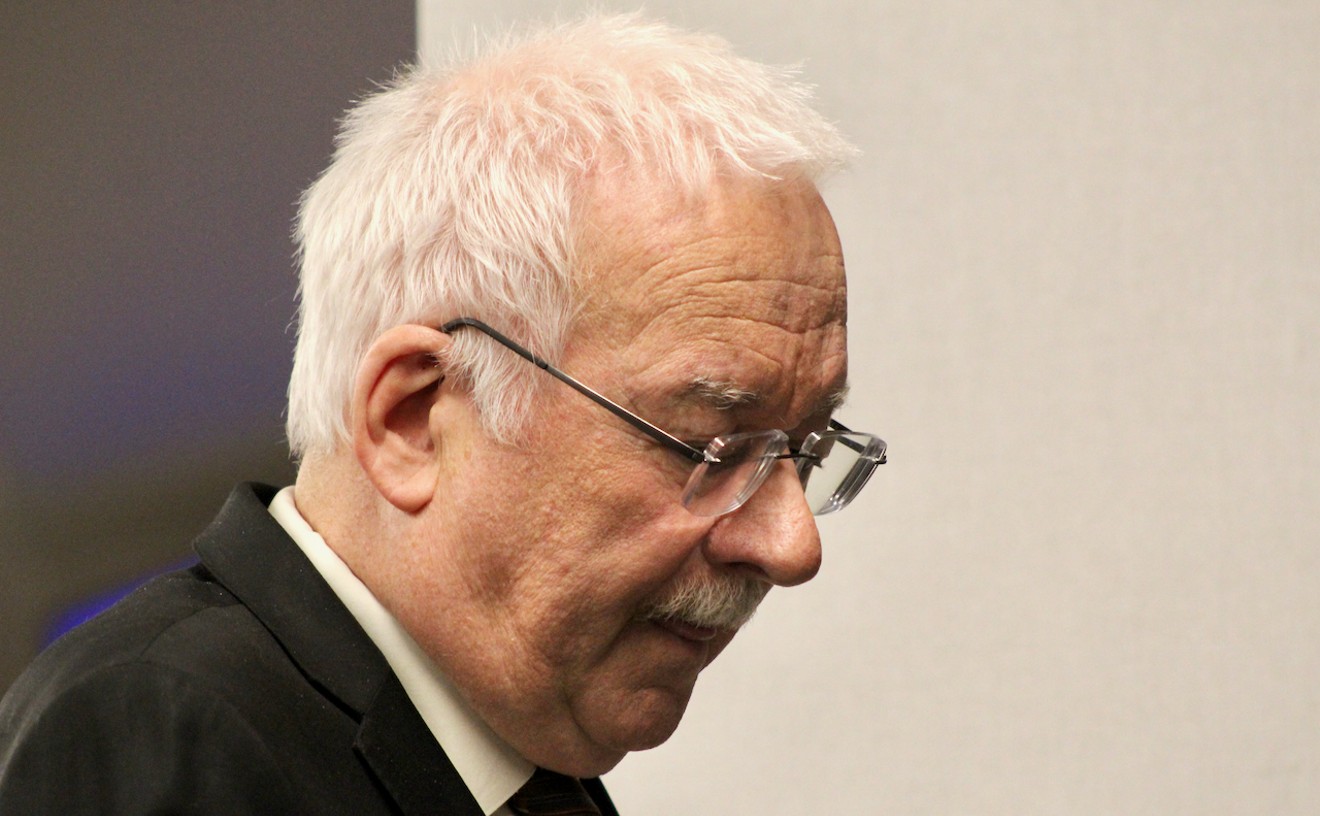I'm not sure they've found the solution.
But our leaders are. Phoenix police, police union officials and city politicians have decreed that the way to protect our people in blue is to put two cops in every patrol car.
Until last week, almost every Phoenix police officer rode alone. Not so now. Within days of Atkinson's death, the police department had shuffled schedules and tapped overtime hours to put two cops in every patrol car during what is considered to be the day's most dangerous shift--4 p.m. to 2 a.m. When the Phoenix City Council considers the budget for the next fiscal year later this month, there will be a request for an additional $3.5 million to hire 77 more cops and make the two-to-a-car plan work.
At first, it sounds great. Four eyes are better than two, right? There's safety in numbers. If I were a cop, I'd certainly want another cop--or two or three or a dozen--along for the ride. In fact, I was shocked to learn that, unlike in the movies and on TV, big city cops generally ride alone.
But then I started calling national law-enforcement experts and learned that since World War II there has actually been a shift away from the "buddy system" to one-cop cars--for safety reasons.
The theory, borne out through research, is that it is better to have officers covering more of their turf in more patrol cars rather than riding around together. And fewer cars means longer response time--a crucial factor in protecting the citizenry.
I started to wonder if we're really doing justice to Marc Atkinson's memory. Would a partner have been able to save Atkinson the day he drove into an ambush by three armed drug-dealing suspects? Or would we have had funerals for two cops?
After studying the issue, a reasonable person might conclude that while mourning Atkinson, police and city leaders are using his death as leverage in a campaign to get more funding for a program viewed by many experts as a panacea. In fact, some believe the program could even put cops--and citizens--in greater danger.
At the very least, our top officers and politicians need to do some homework before devoting precious resources to what may be just another emotion-fueled, feel-good program.
Long before Marc Atkinson's death, the Phoenix Law Enforcement Association was pushing for two-officer patrol cars. Terry Sills, the union's president and a 25-year police veteran, says his colleagues want a partner on the road.
"It is nice to know that you have a back-up right beside you," Sills says.
A few weeks ago, at PLEA's request, the Phoenix Police Department began a test program at its South Mountain Precinct, putting two officers in each patrol car. The results of the test aren't in yet, says department spokesman Detective Mike McCullough.
The move is in sharp contrast to a nationwide trend away from two-officer cars, law enforcement experts tell me. Some police departments in the northeast part of the country still use two-officer patrols, as do some precincts of the Los Angeles Police Department. But for the most part, officers ride alone.
As far back as 1967, the President's Commission on Law Enforcement and Administration of Justice noted that one-officer cars were safer. A study conducted in 1977 by a group called the Police Foundation is widely considered the best research on the subject.
The Police Foundation, a nonprofit research group based in Washington, D.C., studied the San Diego Police Department and concluded that although officers showed a slight preference for two-officer cars, the one-officer cars better served the community. Economics was a factor; the study noted that it was easier to cover the community with one-officer cars. But safety was said to be better with one-officer cars, too. The study noted that there were fewer reported incidents of resisting arrest with one-officer cars, and that two-officer cars did not reduce the odds that an officer might be assaulted or injured.
That 1977 study is still widely cited today, says Louis Mayo, a management consultant and executive director of the nonprofit American Police Association in Washington, D.C.
Mayo is a strong proponent of the one-officer car.
"A one-officer car is more cautious than a two-officer car," he says. "Also, it's standard procedure in most police departments that whenever an officer is dispatched to a situation that has any potential volatility, a back-up car is sent, so you will have two or more officers on the scene. But in the meantime, I should emphasize that most police assignments are not for violent encounters, and in many cases it may be to take a routine report on a past theft. Well, to have two officers standing around doing that is not a good use of your personnel."
Mayo concludes, "It doesn't result in more officers in the field, because let's face it: Your police budget is limited like all other budgets. But for a given budget, you have a much more efficient use of your police officers in one-officer cars than you do in two-officer cars."
Carl Mica, communications director for the Washington, D.C.-based Law Enforcement Alliance of America, tells me his group's members--rank-and-file law-enforcement officers--prefer two-cop cars, but the group doesn't consider them a high priority.
"It's not something that we've worked on, it's not something that we've . . . tried to implement across the country. It's just something that we think is relevant," he says.
After speaking to Mayo and other experts, I was surprised that the two-officer concept has already been approved in Phoenix.
I won't claim to know which arrangement is better--one or two officers to a car. But I do believe the matter deserves a closer look.
Terry Sills admits he's done no research into the matter. "What price do we put on one of these young officers' lives?" he asks passionately.
But why not stop and figure out if two-officer cars are the best allocation of our limited resources?
Don't count on Mayor Skip Rimsza to do any critical thinking. Rimsza spokesman Scott Phelps says, "Our position, almost always in these cases, is the elected officials don't automatically become experts in everything when they win [office]. So we rely . . . on the professionals for their best advice."
Apparently, Rimsza relied on the same sagacious "professionals" when he rushed to rename Sky Harbor after Barry Goldwater in the hours after the senator's death.
Phoenix police spokesman Mike McCullough hasn't done any research into the matter, either. He assessed the pros and cons of the one-officer/two-officer debate.
"I think because of the increased number of weapons and more violent nature of the calls now, it makes sense to have two people in a car. You don't have to be waiting for your back-up to arrive," he says, raising a good point that may not have been adequately addressed in the aging San Diego report.
"The problem is," he continues, "we've always made a pride of our response time, and our response time is because we have so many police officers on the street in single units, and we can get an officer to the call very quickly. With two-man patrol cars, that cuts the number of patrol cars we have out on the street at any one time. . . . We're 500 square miles, and when you minimize the number of officers or cars on the street, you have a whole lot more coverage that is required for a two-man police unit.
"But I can tell you for a fact, when you do ride two men, you get a whole lot more work done. . . . You can be off on the side of the street while one's doing paperwork, but the other officer is also watching, and he can respond to another call while it's in progress."
(Actually, McCullough doesn't know this "for a fact." It's his opinion, which is certainly worth hearing.)
And in the Atkinson case, he admits, "I don't think that you can pinpoint that this wouldn't have occurred had there been two officers in the car."
Could there have been two dead officers?
"Yeah, there's a possibility that there could have been that. [But] there's a possibility that those three suspects would never have fired, there would've just been a chase."
The two-officer patrol car deserves consideration. Part of that consideration should be study and reflection, not reactionary policymaking.
Remember, Phoenix has added 350 new police officers in the past four years. People are still dying on our streets. Cops are dying. The extra cops mean ever more crowded courts, jails and prisons. Every action we take to improve the criminal justice system has a reaction, and each needs tending.
An emotional quick fix is no tribute.
Contact Amy Silverman at 602-229-8443 or her online address: [email protected]











